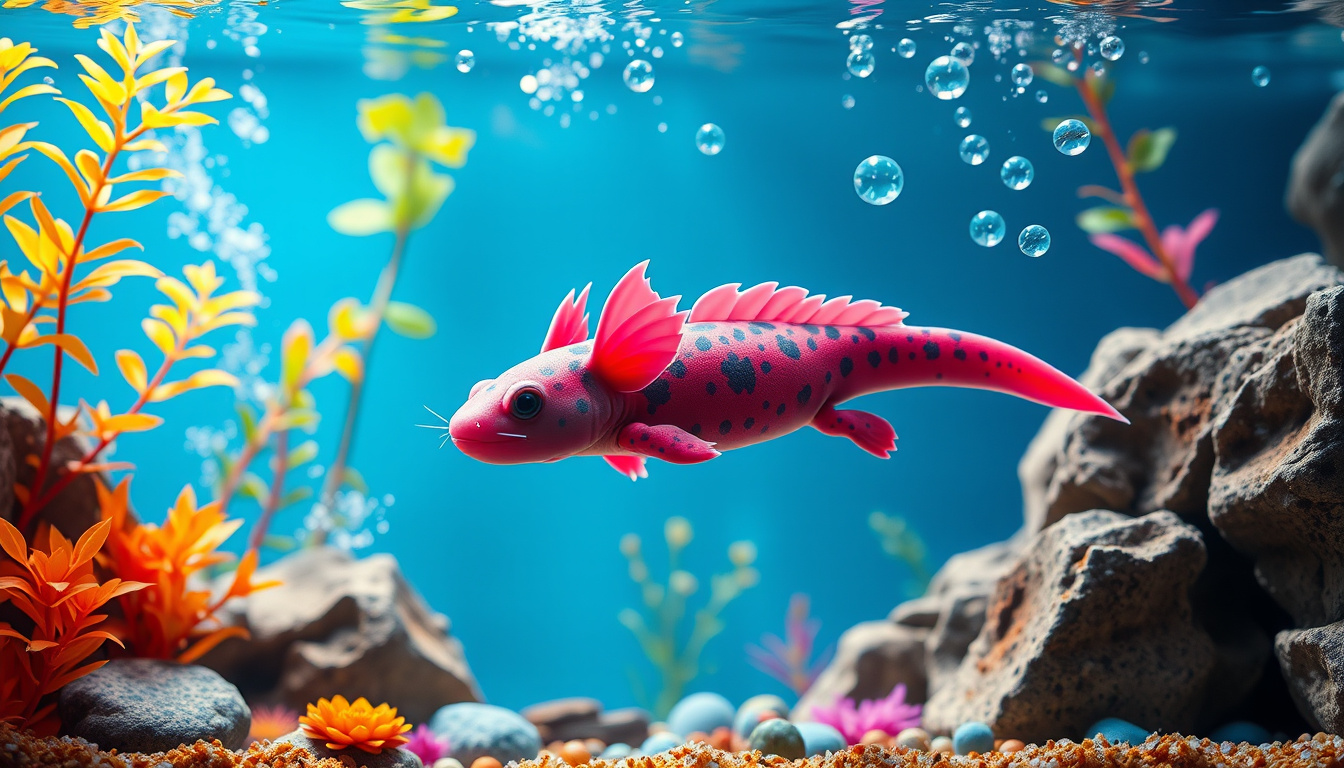Are you an aspiring axolotl hobbyist eager to dive into the enchanting world of these unique aquatic creatures?
If so, you’re in for a treat!
Axolotls, often referred to as ‘Mexican walking fish’ (although they’re not fish at all), are mesmerizing amphibians known for their charming looks and remarkable regenerative abilities.
This guide serves as your ultimate companion on this exhilarating journey, packed with essential tips to help you provide the best care for your axolotl and create a thriving environment.
Let’s unlock the secrets of becoming a successful axolotl hobbyist!


Common Health Issues and Prevention for Axolotls
As an aspiring axolotl hobbyist, it’s essential to be aware of common health issues that these extraordinary creatures face, along with effective prevention strategies.
Axolotls are generally resilient, but they can fall prey to various diseases if not properly cared for.
One of the most prevalent issues is water quality; poor water conditions can lead to skin infections and gill collapse.
To prevent this, regularly test and maintain the water pH, ammonia, nitrite, and nitrate levels in their habitat.
Additionally, axolotls can suffer from nutritional deficiencies, so offering a diverse diet—rich in proteins and vitamins—is crucial.
Overfeeding can also lead to obesity and swim bladder problems, so moderation is key.
Lastly, stress can significantly impact their health, so ensure their environment is peaceful and spacious, allowing them to thrive.
By recognizing these health issues and implementing preventive measures, you can enjoy a long, healthy life with your axolotls.
Socializing and Handling Your Axolotl Safely
As an axolotl hobbyist, it’s essential to understand how to socialize and handle your aquatic companion safely.
Axolotls are fascinating creatures known for their unique appearance and regenerative abilities, making them popular choices for pet owners who appreciate their quirky charm.
When it comes to socializing with your axolotl, patience is key; these amphibians are generally solitary and prefer to interact on their terms.
To ensure a stress-free experience, take time to observe your axolotl’s behavior in its tank before attempting to interact.
When handling your axolotl, always wet your hands first to avoid damaging their delicate skin; avoiding rough handling is crucial for their wellbeing.
By following these guidelines, you can foster a safe and nurturing environment for your axolotl, allowing both you and your pet to enjoy a rewarding relationship.
Frequently Asked Questions
What is the ideal habitat for an axolotl?
The ideal habitat for an axolotl includes a spacious aquarium (at least 20 gallons for one axolotl), with cool, clean water between 60-68°F, a gentle filtration system, and plenty of hiding spots such as plants or caves.
What should I feed my axolotl?
Axolotls thrive on a diet of high-quality pellets designed for carnivorous aquatic pets, live or frozen foods like bloodworms, brine shrimp, and small feeder fish.
Make sure to feed them a varied diet to ensure they receive proper nutrition.
How can I prevent common health issues in axolotls?
To prevent common health issues, maintain good water quality with regular changes, monitor water temperature, avoid overcrowding, and ensure your axolotl is not stressed.
Keeping an eye on their eating habits and overall behavior is also crucial.
Is it safe to handle my axolotl?
Handling axolotls should be kept to a minimum as they are sensitive creatures.
If you must handle them, make sure to wet your hands first to protect their slimy skin, and be gentle to avoid causing stress or injury.
Where can I find resources and communities for axolotl hobbyists?
You can find resources and communities through online forums, social media groups dedicated to axolotl care, and local pet clubs.
Websites like Axolotl.org or dedicated Facebook groups can provide valuable information and support among fellow enthusiasts.
[center][/center]
[center][color=rgb(10, 10, 10)][highlight=rgb(255, 248, 231)] [/highlight][/color][color=rgb(10, 10, 10)][highlight=rgb(255, 248, 231)]As an Amazon Affiliate,[/highlight][/color][color=rgb(10, 10, 10)][highlight=rgb(255, 248, 231)] [/highlight][/color][color=rgb(10, 10, 10)][highlight=rgb(255, 248, 231)]Savvy Keto makes a commission[/highlight][/color][color=rgb(10, 10, 10)][highlight=rgb(255, 248, 231)] [/highlight][/color][color=rgb(10, 10, 10)][highlight=rgb(255, 248, 231)](at no extra cost to you)[/highlight][/color][color=rgb(10, 10, 10)][highlight=rgb(255, 248, 231)] [/highlight][/color][color=rgb(10, 10, 10)][highlight=rgb(255, 248, 231)]on purchases you make[/highlight][/color][color=rgb(10, 10, 10)][highlight=rgb(255, 248, 231)] [/highlight][/color][color=rgb(10, 10, 10)][highlight=rgb(255, 248, 231)]thru links on this site.[/highlight][/color][/center]

